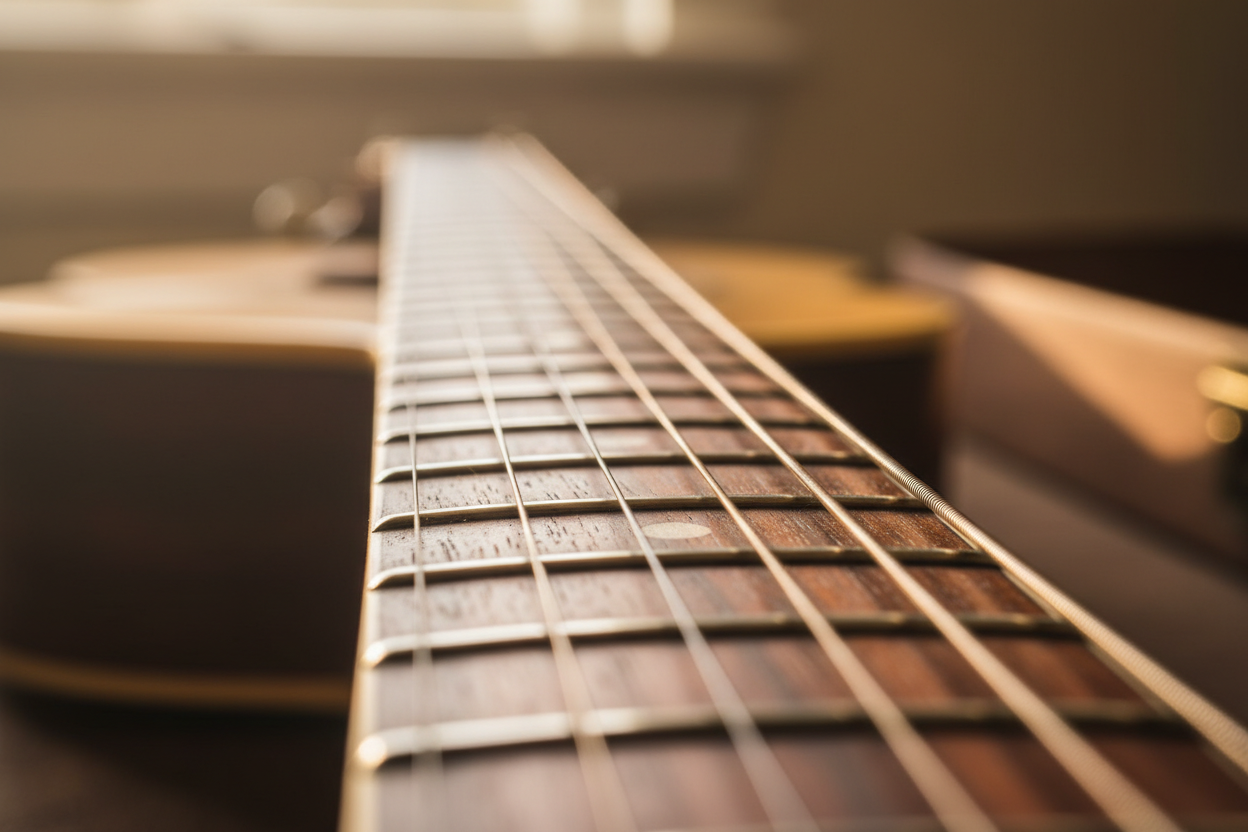Here’s a scene that’s easy to imagine: a person that doesn’t quite like the sound of their guitar, and they are eager to change this, but there’s tension about how much they can improve their guitar sound and not knowing how and what to switch – be it the guitar or a piece of gear. It’s natural; beginners have wilder imagination about the potential of any gear and are not very skilled in tapping into what the guitar can offer. Experienced players, though, are well aware of their gear’s capabilities and can tweak their even modest setup to sound surprisingly good.
Our goal here is to lessen the gap and plank some crossings to relieve the tension for players who want to improve their guitar tone. We hope to bring both serenity and enthusiasm to players regardless of whether they choose to stay with their current setup for a while longer or to get a better one. We’ll go over both the technical tips on what to pick for your guitar and the ‘technical’ guidelines on what to develop as a player in the long run.
1. Learn how to hold your picks
We’ll start with tips that can apply to every guitar to maximize what they have to offer. The only investment here is time and regular playing to get the feel of your pick grip. Much of the tone depends on how the pick interacts with strings. Plucking will produce a different tone than lightly bowing it like on a violin – and there’s a whole spectrum between the two. The grip depends on the style you play, but the general rule is to hold the pick just barely hard enough so your other hand can’t take it out.
2. Get to know your picks
This one goes with some time to test different pick materials and thickness. There is a difference between acoustic and electric guitar picks, and different materials, shapes, etc., work differently on different strings. Try to figure out which picks work best for your typical playing, and work your way up from there (find better materials, check the thickness). If there’s a song or a style of playing that doesn’t sound so good with that one, try another type of a pick. You should technically have different picks for lead, strumming, and shredding, for example (though you can pick one during your gigs).
3. Mind your strings
You should also pay attention to the strings you set up on your guitar. Ask around to check the span of string thickness your guitar can deal with, and make sure you’ve tried the .08s, the .09s, and .10s, at least once. Players typically change strings every three weeks to a couple of months, so this should be easy to do and quickly. You can notice a little more resistance in heavier strings but also a clearer and more resonant tone.
4. Get generous with mids
The guitar is a popular instrument because it utilizes mid-frequency tones, and the human ear is naturally focused on this. When setting your rig, feel free to dial the mids on your EQ a little more than the rest. Yes, there’s a difference with more or less bass and treble, but the mid is what carries the whole thing. It’s surprising how many players forget to tune the mid-frequencies before anything else.
5. Be more moderate with treble than the presence
Treble covers the high-end of the frequencies, and it brightens the tone. However, if you crank the treble, the tone can be robust, pinchy, and not fun. Combine less than too much treble with presence, and you are more likely to get what you want. Presence contains some of the higher mid frequencies as well, so it smoothens the crosses between the mids and trebles more naturally.
6. Check your pots
Buying pots has become a popular hobby lately. Before you start doing that, make sure you get to know a little more about them. You may notice that your guitar tone changes way more on one side of the dial, and the rest is useless. You’ll also hear 300k pots are better than 500k ones, and both are correct. This depends on your pickups, but what’s good to know is that you can buy a 500k pot but get a 440k or 620k resistance in it. That can mess up your sound.
7. A simple amp advice
Look at it. It’s your baby. And every baby is different. Don’t take Dr. Spock’s advice too rigidly and stick to the exact settings your favorite guitar player used. You maybe need to tweak a little to sound closer to them on your amp. Instead of simply dialing as someone wrote online, set it up like that, and feel free to go half of your index finger both ways. Yes, it could sound much different, but in time you’ll know why.
8. Pedal order
If you’ve gotten some pedals already, experiment with the order which comes before the other. Though I am an advocate of learning through our own mistakes, being left in the dark wasn’t too pleasant, so here’s the deal. You can think of pedals in four main categories, and they typically go in the following order: tone, pitch, modulation, and dynamic (time). Tone and pitch are your bread and butter pedals like compression, wah, distortion, whammy, etc. Modulation includes chorus, octave, phaser, and similar. Time is used for the delay and reverb effects. Again, try to play with the order to learn why, and you may discover something unusual that sounds good to you. For a specific genre and song, it’s good to learn about the pedal order typical for that genre.
9. Invest in your cables
More expensive cables come with more durable materials and purer, coherent conductors. The price is increased due to better purification of copper or other conductive material, and that’s simply worth it. As a final remark, let’s keep in mind that the magnetic field an electric signal makes in the cable can mess up the signal in the other one. This is worst if input and output cables are stuck close and parallel to each other. The interference is minimal if the cables cross at a 90-degree angle.
Written by Marko Jovanovic




